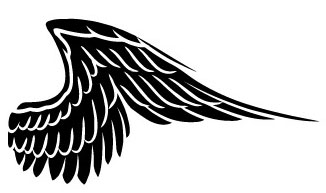
performed a ground test of a full-scale wing using a fiber optic strain-sensing system.

Two measurement lines were set along the wingspan to rebuild the deflections and cross-sectional twist, then the data were compared with those computed from a finite element model. The Ko’s Displacement Theory was applied to the deformed shape analysis of the wing of the Ikhana UAV. Using more than one sensing line along the span of a wing structure, it is also possible to evaluate the cross-sectional twist angle due to torsion. Double integration of the curvature provides the deflection shape at the same discrete locations. Through axial strain measurements at discrete positions along a line, it is possible to evaluate the curvature. The Displacement Theory of Ko, Tran, and Richards is based on the classical Bernoulli–Euler beam theory. Further numerical analyses show that the Modal Method is influenced by the set of mode shapes included in the analysis and that excellent reconstructed deflections can be obtained with a reduced number of sensors, thus assessing the approach as an efficient shape-sensing tool for aircraft structures real applications. The Modal Method is shown to be more accurate than Ko’s Displacement Theory, especially for the evaluation of the deflection field. For a given common set of surface strain measurement points, Ko’s Displacement Theory and the Modal Method are compared in terms of accuracy of the reconstructed half-wing deflection and twist angle. Then, the multirotor UAV is presented and a finite element model of its half-wing is used to simulate the static response to straight-and-level flight conditions. The approaches are summarized in order to set the framework for the numerical comparative investigation. An object of the shape-sensing analysis is the half-wing of a multirotor UAV. The aim of this paper is to compare two approaches to shape sensing that have been shown to be more efficient, especially for aircraft structures applications, in terms of required input strain measurements: the Ko’s Displacement Theory and the Modal Method. Your RO badge I think it?s safe to say is an original but may date post war.Īgain these are just my opinions and I don?t mind if someone can prove me wrong.Shape sensing is the reconstruction of the displacement field of a structure from some discrete surface strain measurements and is a key technology for structural health monitoring. Not a great sign of being fake I agree but I think it?s unusual to find so many mint examples of this type of badge. There would have been no reason to still make these badges post war and yet these two badges have exactly the same type of construction as the other two so I believe all four of mine are duff repros.Ģ) The other reason is that I have seen a few of this type of wing (with the black fabric backing) but none have ever shown any sign of ever having been worn.


Both the WAG and Observers badges were replaced by other badges before the end of the war (the Observers in 1942) and they would not have been used post war. 1) the construction is not like any of the original WW2 badges I have seen in the flesh. But I believe the type of wing shown in post 15 & 16 are reproductions. I?ll start this off with the caveat that I am no expert when it comes to these wings.


 0 kommentar(er)
0 kommentar(er)
